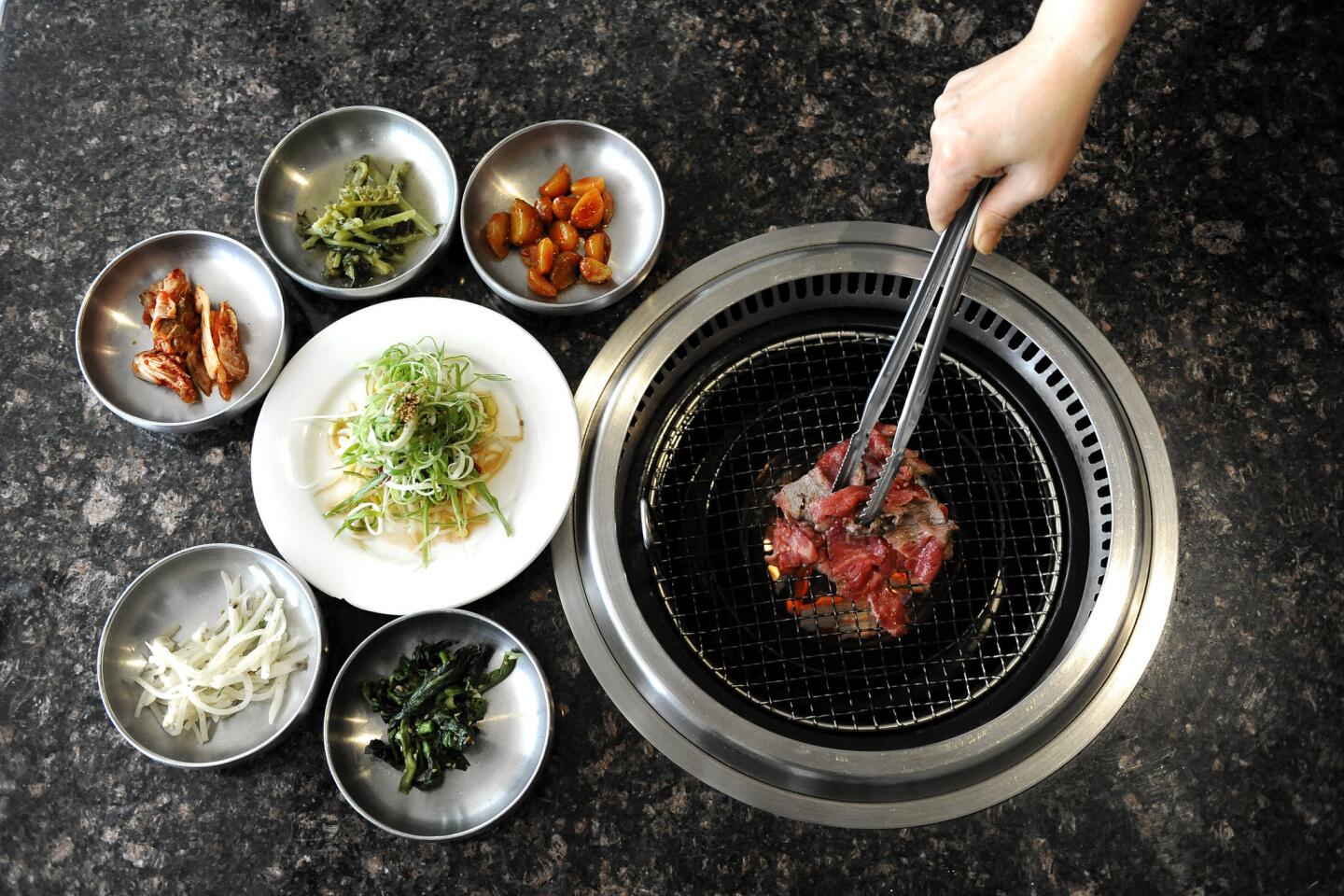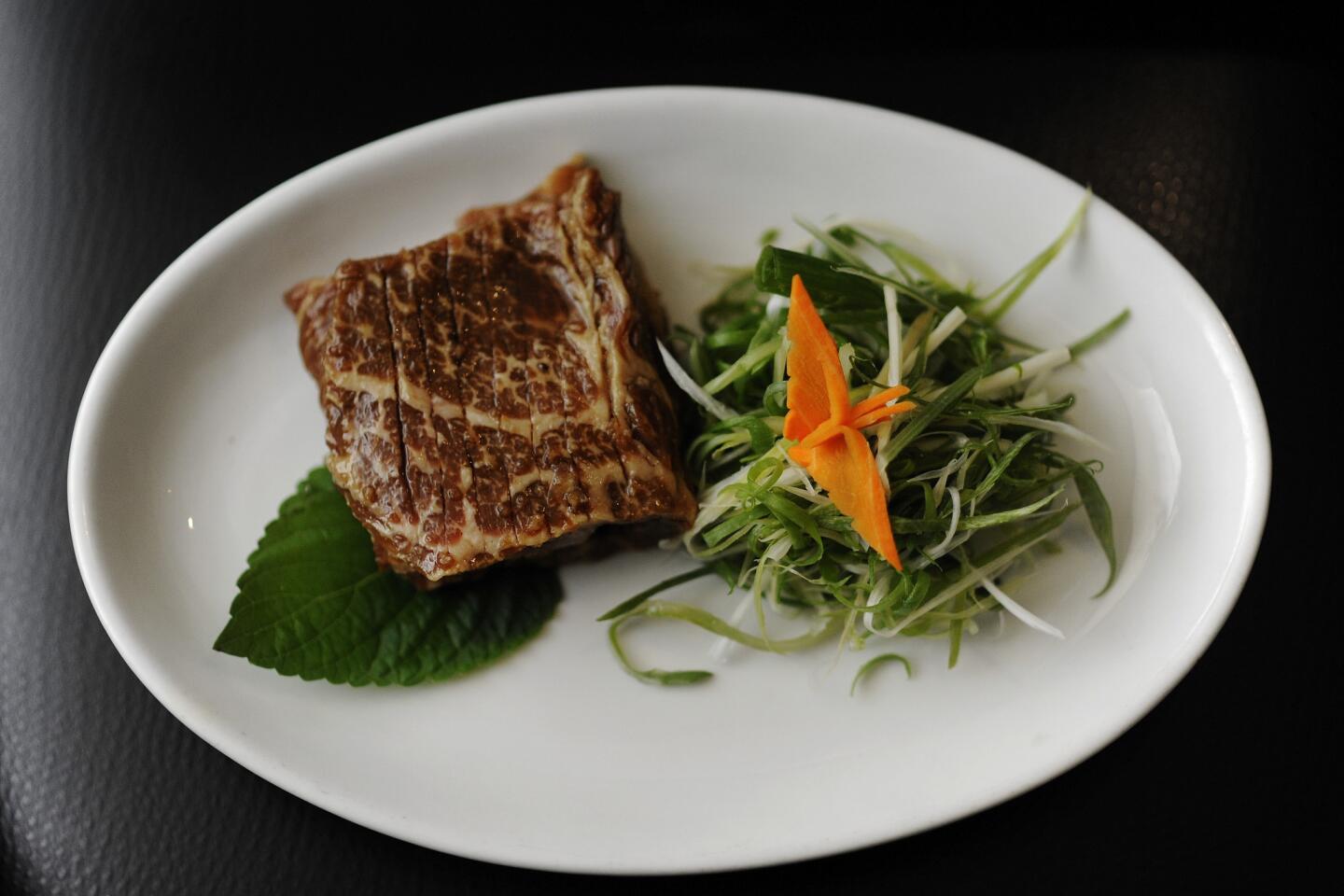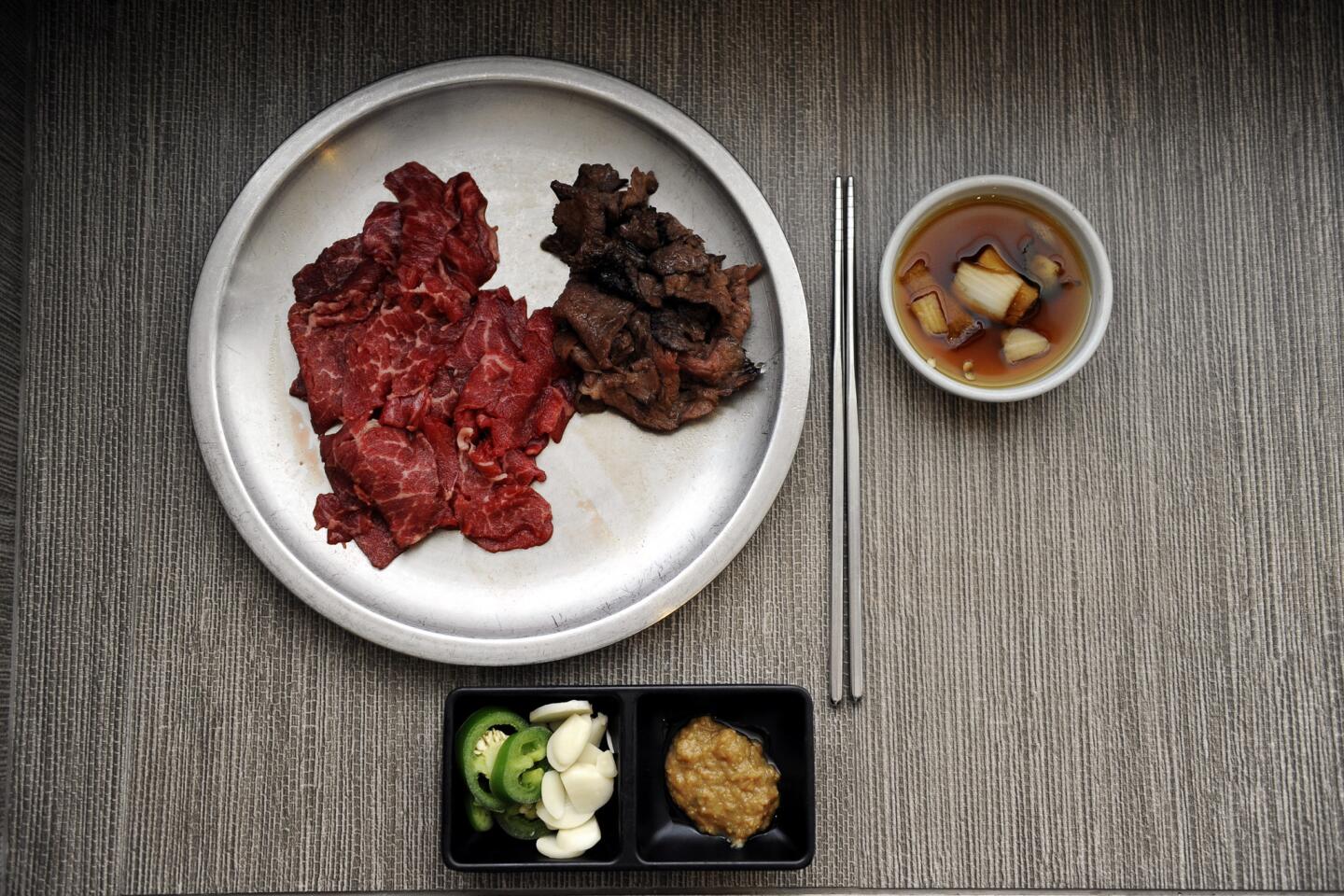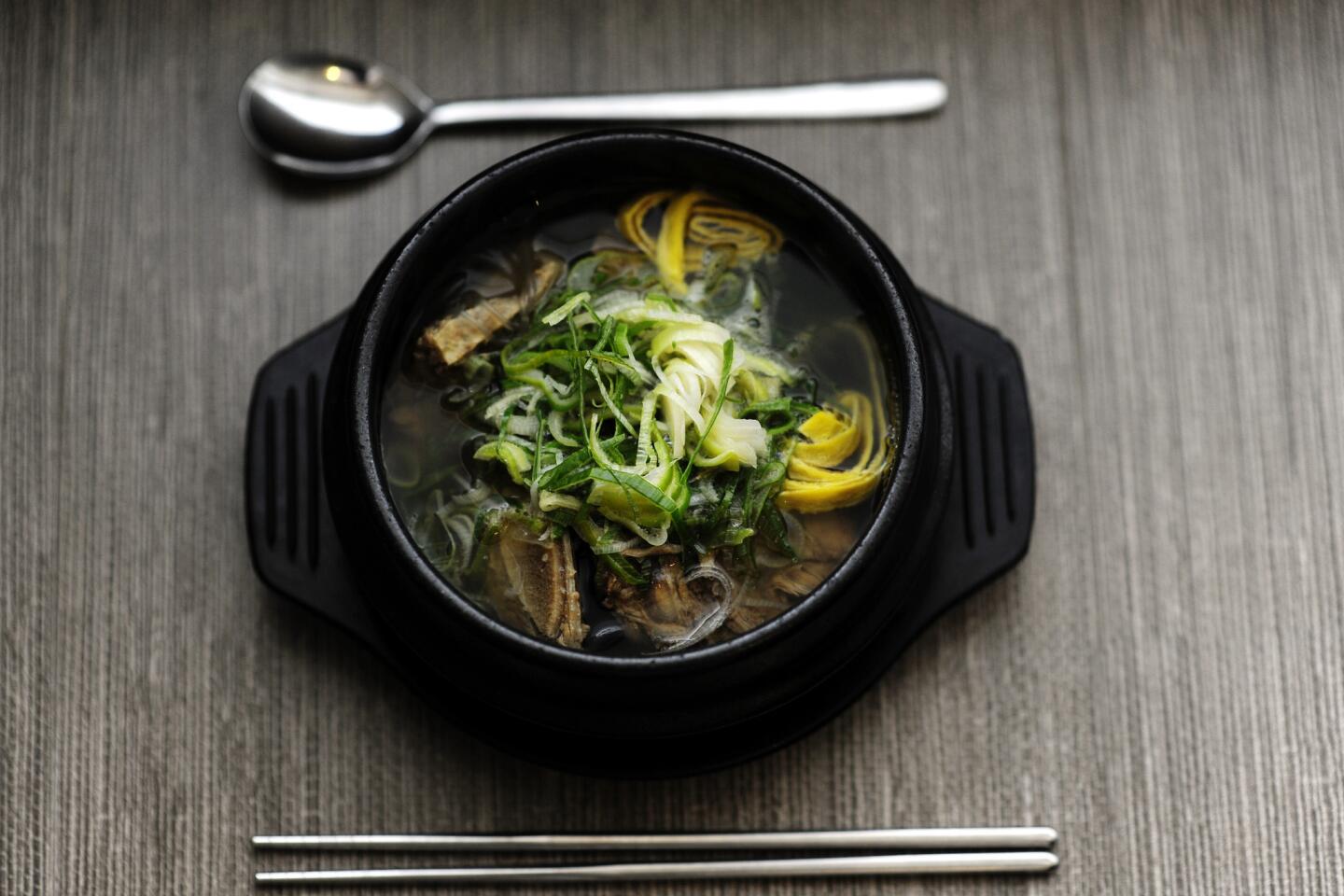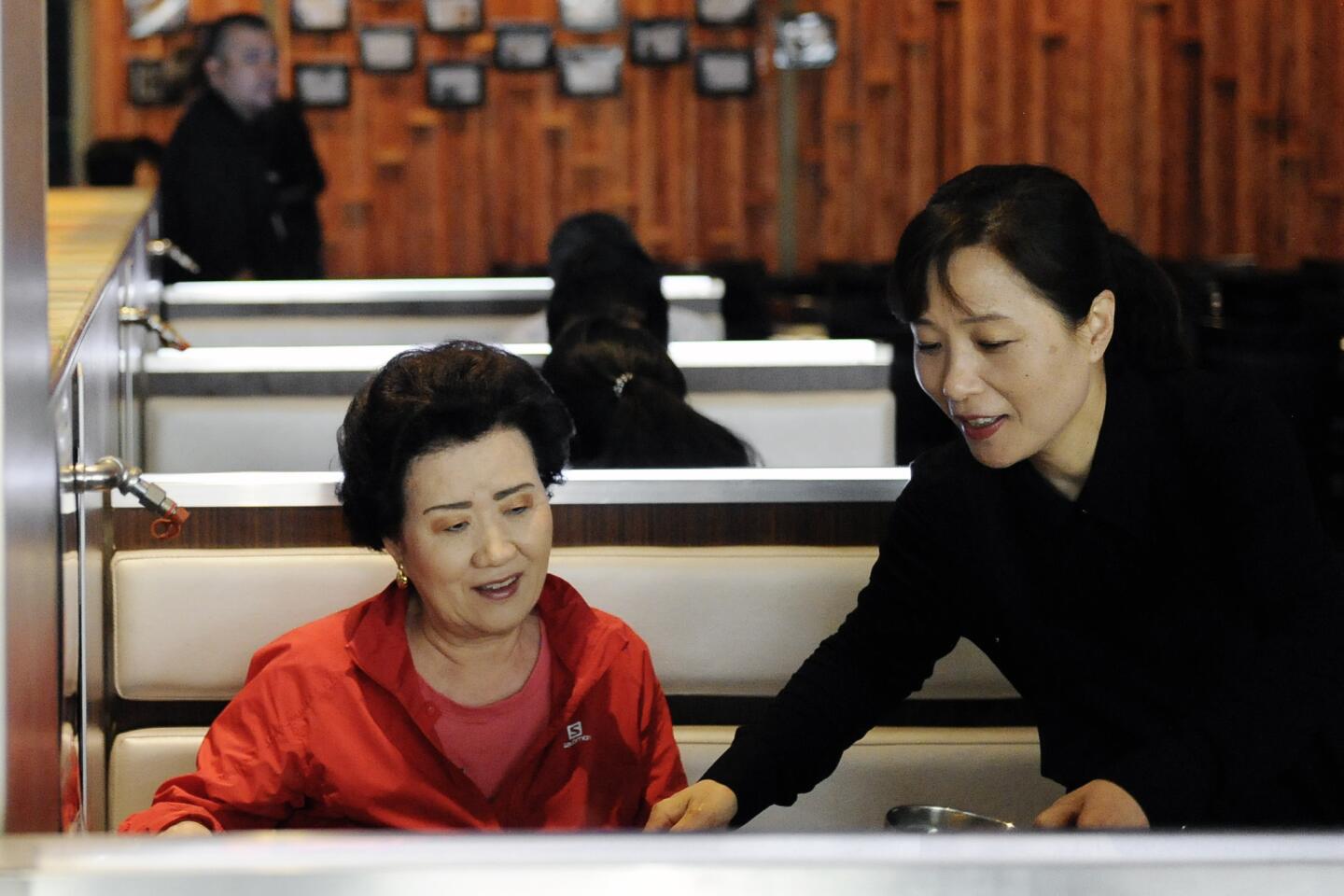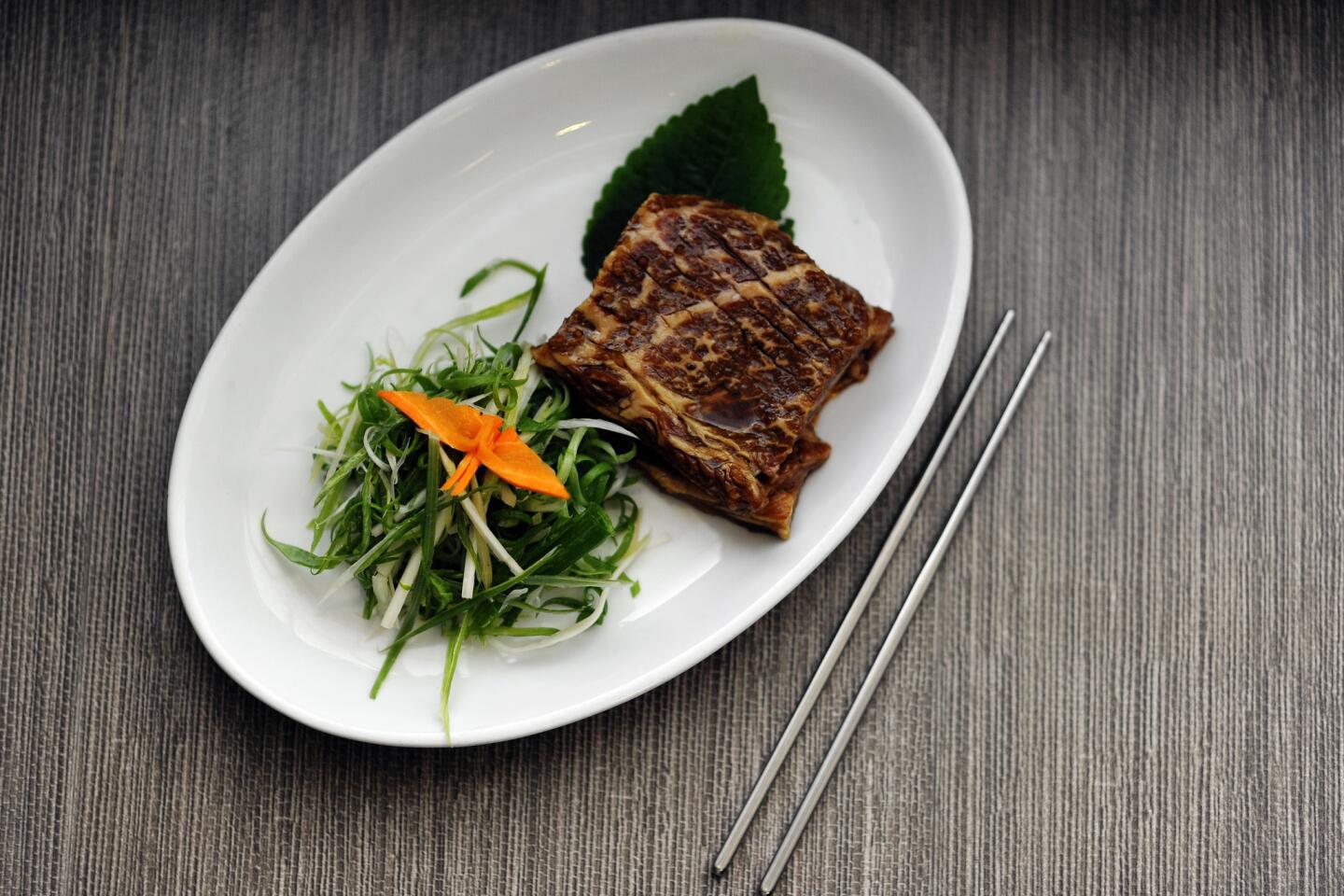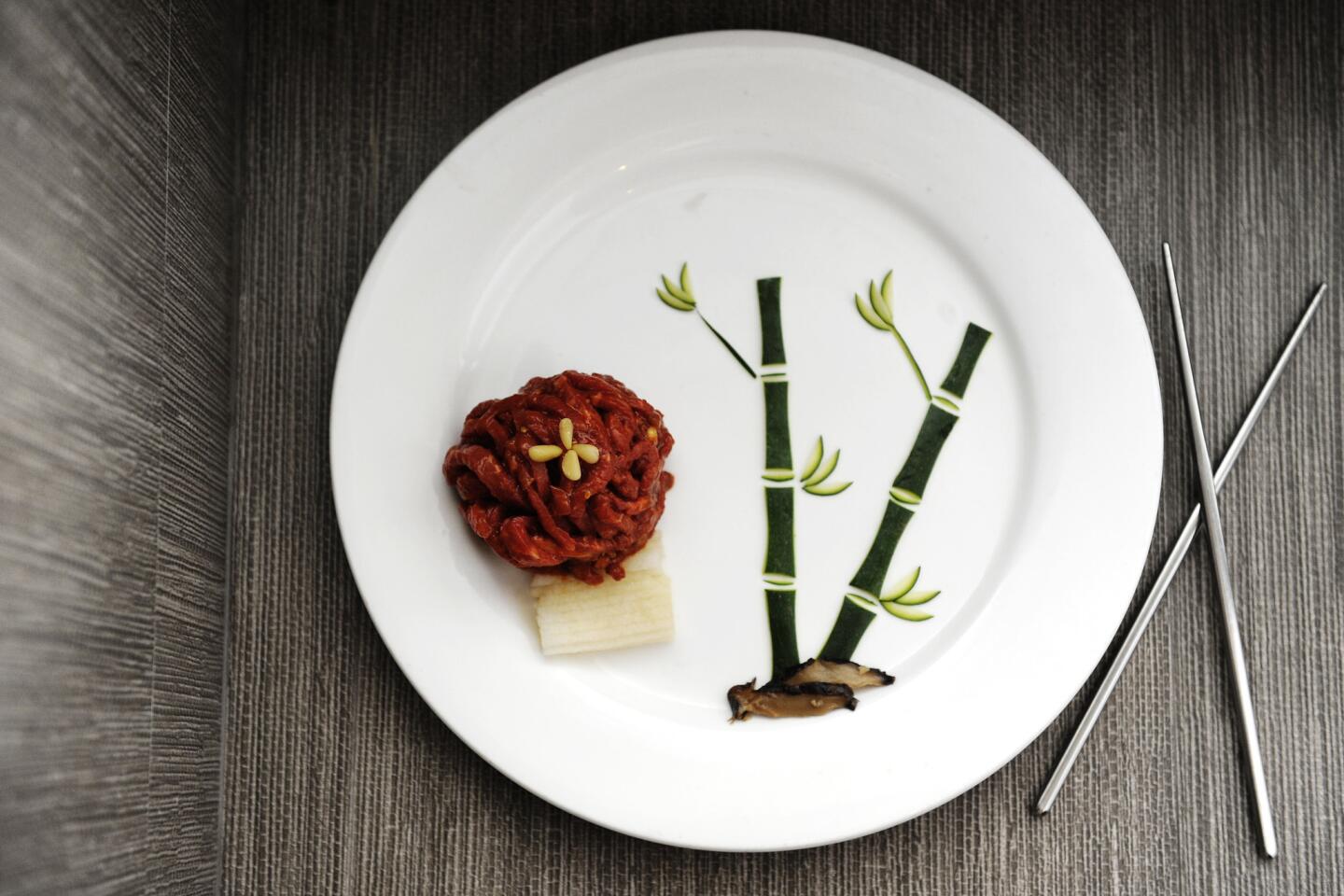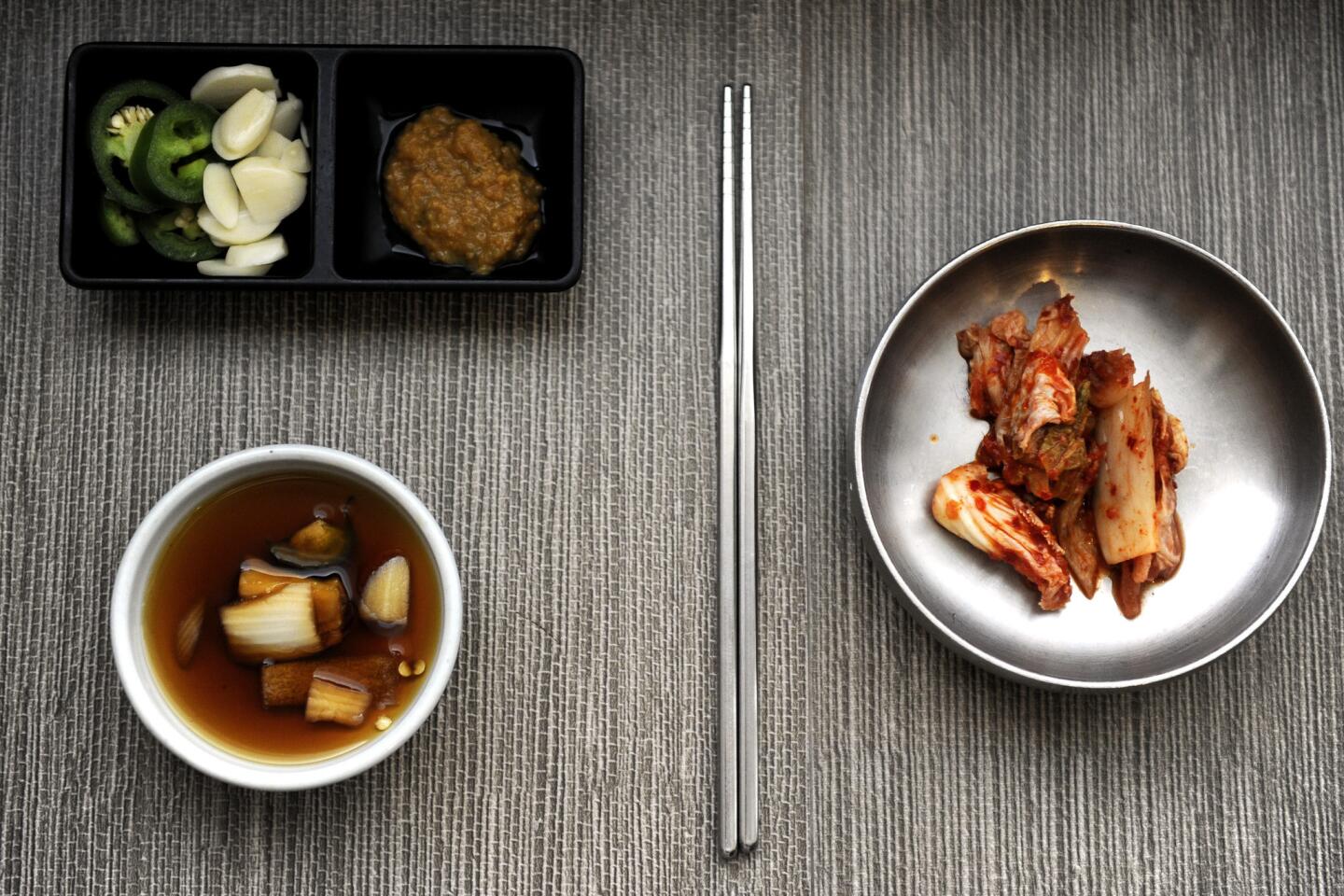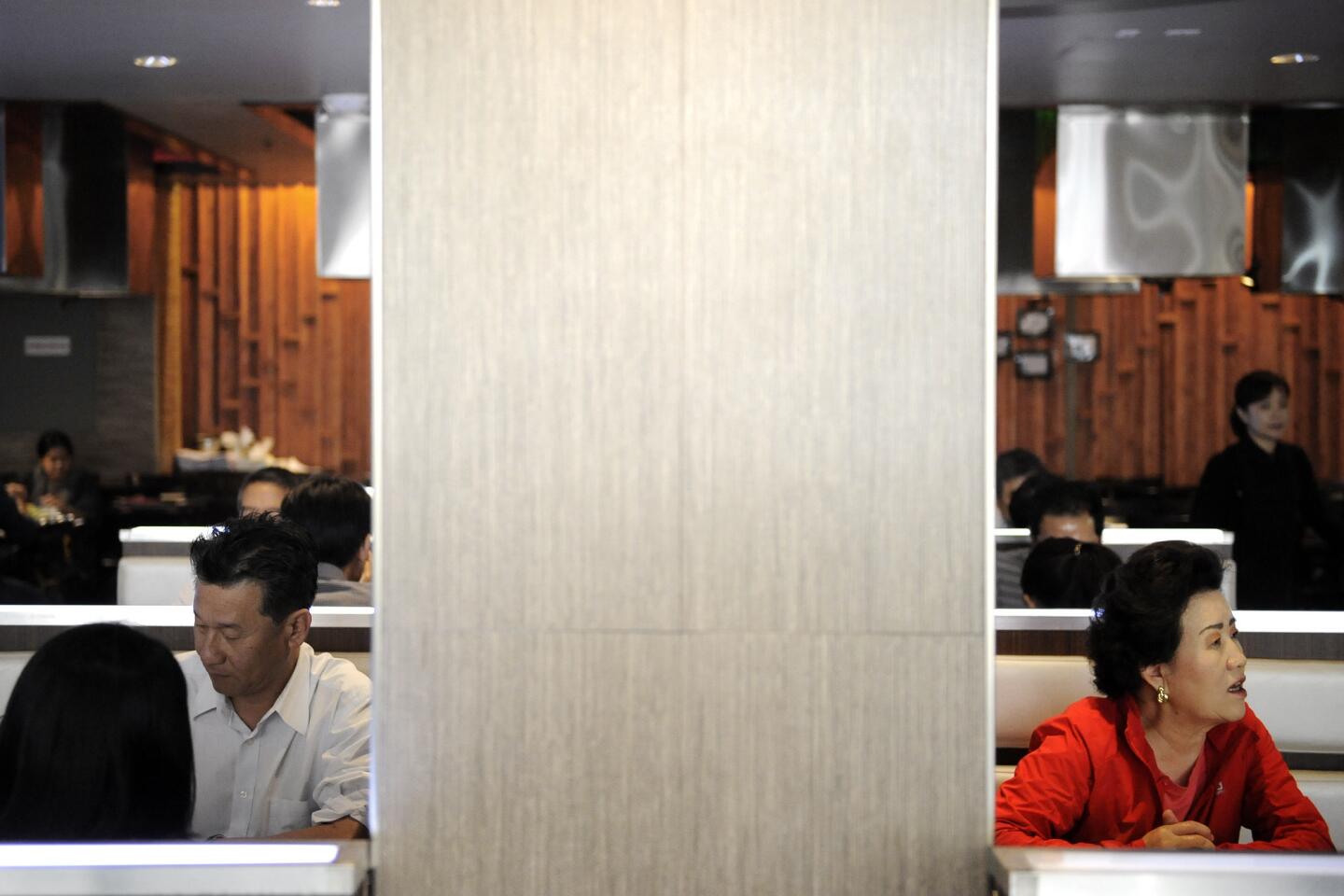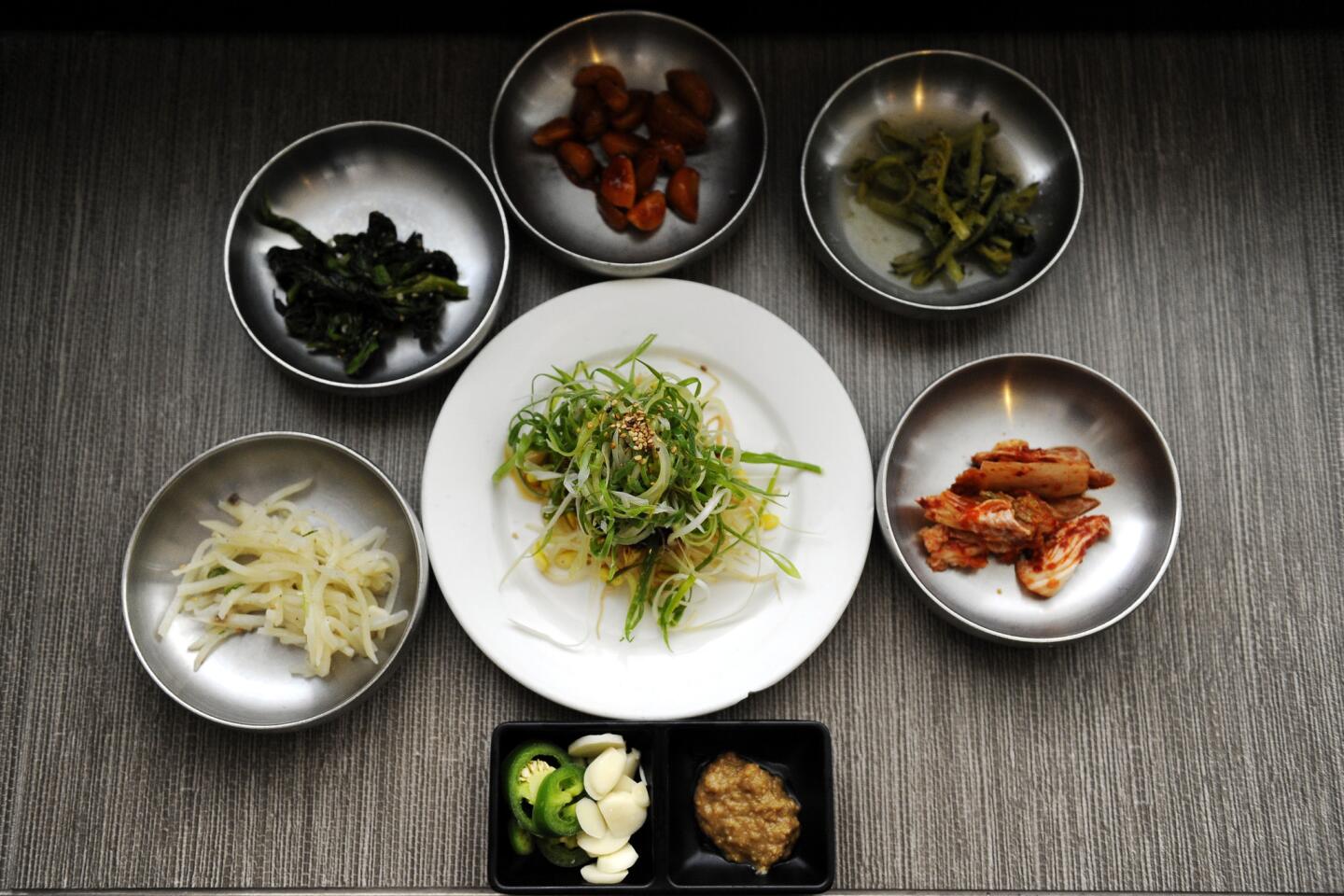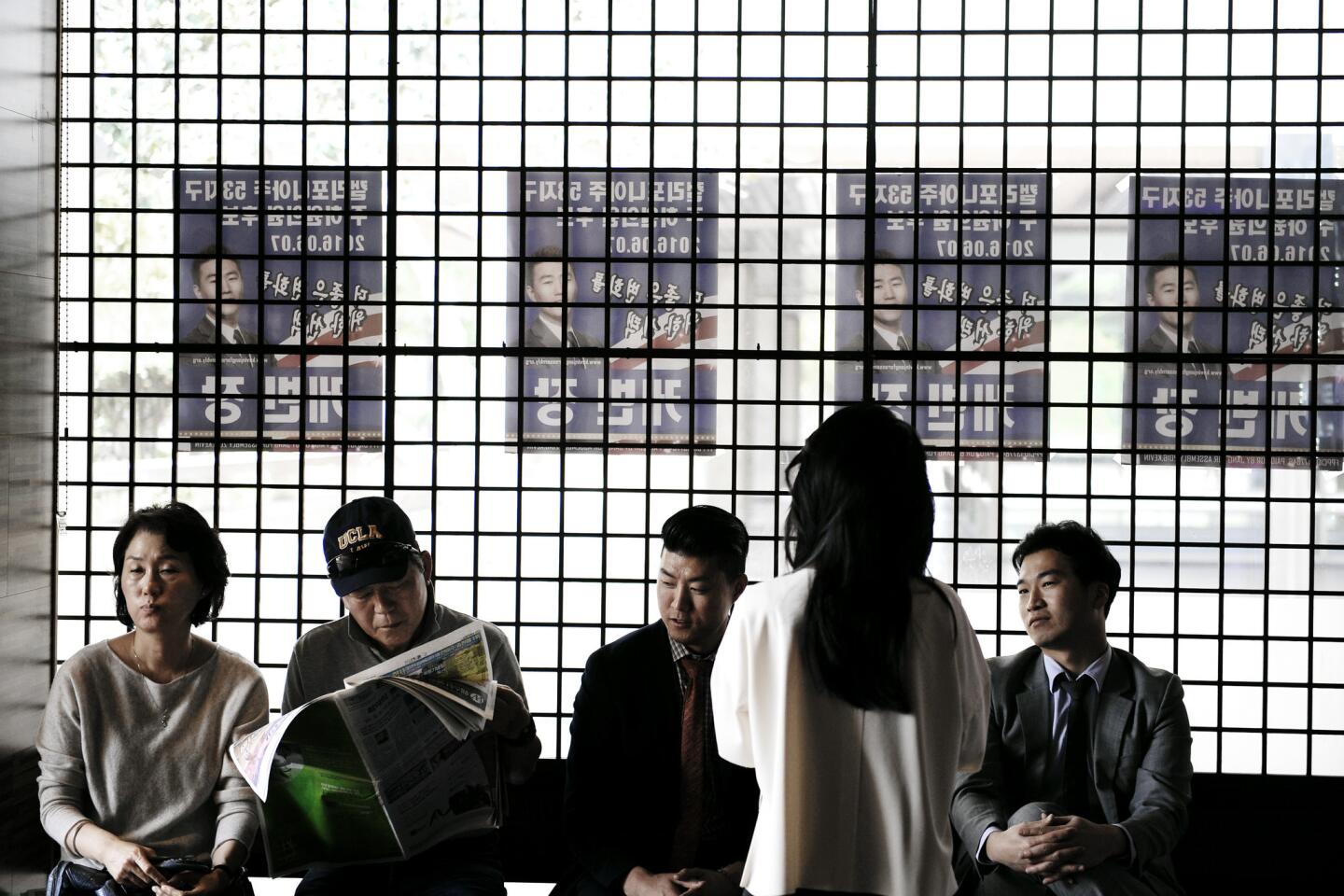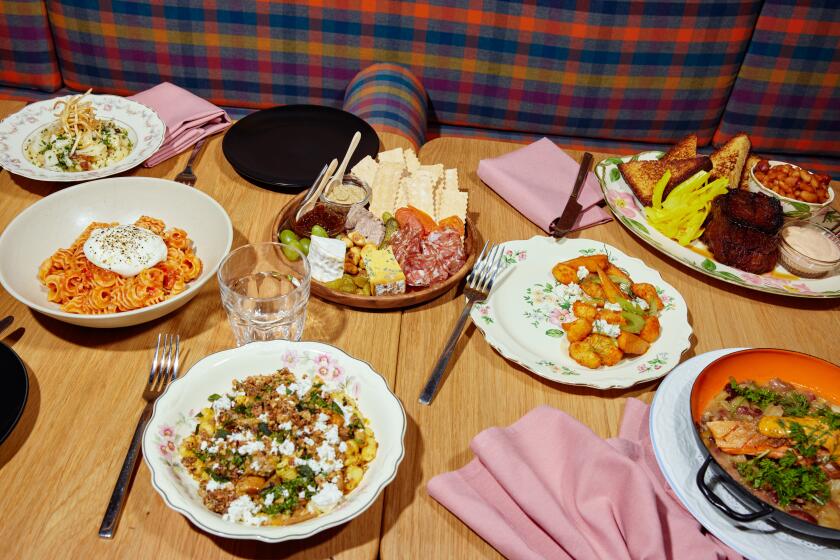Review: Bulgogi cultists, rejoice: Jonathan Gold finds first-rate Korean barbecue at Gwang Yang
- Share via
Have you ever encountered Korean food? Then you have tasted bulgogi. Bulgogi is essentially marinated, thinly sliced beef tossed on a grill until it crisps and caramelizes. Bulgogi is what you find in chain-mall bibimbap, stuffed into Kogi BBQ tacos, and layered onto rice bowls at church carnivals. In the first wave of Korean restaurants in Los Angeles, bulgogi was what non-Koreans were routinely served even when they happened to be sitting in a restaurant devoted to seafood or goat.
Bulgogi can be wonderful: all garlic, sweet soy and char. Yet it is the rare devotee of Korean barbecue who prefers bulgogi to all other cuts of beef – the snap of short rib, the crisp beefiness of brisket, or the meaty richness of kkot sal, sometimes known as “flower meat,” chuck flap or sliced rib-eye, depending on whom you consult. “Bulgogi” has become more or less the generic term for Korean barbecue, what you’d expect as a potato-chip flavor of the filling or a cheesesteak. Restaurant bulgogi tends to be tough and sugary, the filler in an all-you-can-eat barbecue meal.
So the existence of Gwang Yang BBQ, a grand Koreatown restaurant devoted to the cult of bulgogi, the only American branch of a small Seoul-based chain, may at first seem a bit odd. It occupies a luxurious space in a ’60s brutalist office complex that looks like something out of an early Cronenberg film, uses only prime (and American Wagyu) beef, and charges prices not much less than what you might expect to pay in a splashy American steakhouse. The concentration of businessmen is pretty high. It is possible to duck in at lunchtime for a quick, relatively inexpensive meal of bibimbap or vegetable stew, just as you could probably go to the Palm for a salad, but it is pretty much beside the point. It is hard not to walk into Gwang Yang without gazing longingly at the photograph of the tomahawk chop posted near the door.
Inside, maybe near one of the video screens playing either K-Pop or the game, you will find all the usual pleasures of the Korean barbecue restaurant, from the cold barley tea to the waiter who patiently shows you how to juice a lemon using the cap from a bottle of soju. The assortment of banchan, the small side dishes that appear at the beginning of a Korean meal, include puffing pots of steamed egg alongside the kimchi, pickled radish stems and cubes of cold omelet. When you order a crisp kimchi pancake, it may lay atop an arrangement of fresh ggaenip leaves, the pungent herb at the heart of Korean cuisine. The yook-jeon involves a number of eggy pancakes, each stuffed with a slice of cooked beef, arranged like satellites around a haystack of julienne vegetables.
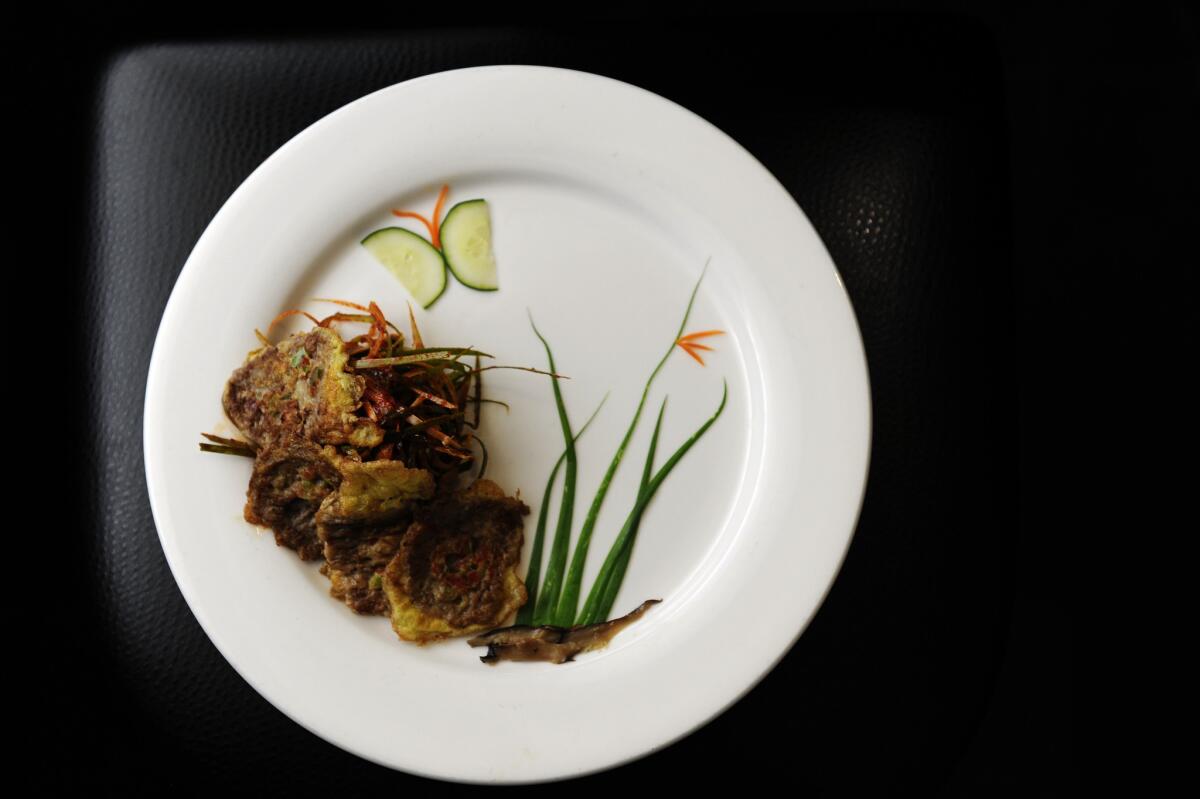
If you get the yukhoe (pronounced yuk-whey), Korean steak tartare, it may appear as a hemisphere of slivered beef and crunchy Korean pear on a plate, or it may form the centerpiece of a still-life fashioned from meat, pear and cucumber cut to resemble bamboo. The yukhoe is one of the best in town at any rate, luxuriant and soft, flavored with a shot of chile in addition to the usual sesame oil, a delicate essay on the possibilities of raw meat.
A grill is slid over the pit in the middle of the table. The gas is flicked on. (The Seoul restaurants are famous for their use of black oak, but actual charcoal does not seem much in evidence here.) The beef, which you can order in individual courses or as a combination meal, begins to arrive – a well-marbled prime rib-eye, cooked like a steak until it is ultimately cut into strips and served; or a wonderful skirt steak, almost impossibly beefy; or the Wagyu kkot sal. If you ask nicely, you will be brought a plate of lettuce or ggaenip leaves in which to wrap the meat. A dab of the seasoned bean paste ssamjang, a shred of scallion, and a slice of hot pepper make the bundles even more delicious. The house’s chile-pickled garlic and tart, bubbly fermented scallions push it over the top.
The server does basically all the cooking for you, turning the meat, cutting it into bite-size pieces with scissors, letting you know when it’s done. He explains the restaurant’s policy of cutting the marinated short rib two different ways – half against the meat’s grain, half with – because the chefs believe that it is pleasant to experience the tenderness produced by one method next to the chewiness produced by the second.
This is first-rate Korean barbecue, the banchan and kkot sal perhaps a step below what you might find at Park’s, but well beyond solid.
Then the bulgogi arrives and you can think of nothing but meat, big sheets frosted with chopped garlic that crumple and soften on the grill, scented with smoke and – pear? Sesame? The waiter swears he doesn’t know! – and dissolving almost like ice cream on your tongue. This is the Gangnam-style bulgogi, barely marinated, and not the restaurant’s L.A.-style, which is the usual sugary thing. You may want another order of the Gangnam-style for dessert.
Gwang Yang
An upscale temple for the bulgogi cult in Koreatown.
LOCATION: 3435 Wilshire Blvd. No. 123, Los Angeles; (213) 385-5600; www.gybbq.com.
PRICES: Barbecued meats $25.99-$39.99; one-dish meals $9.99-$17.99; casseroles $24.99; seafood $18.99-$25.99.
DETAILS: Open daily, 11 a.m. to 11 p.m.. Credit cards accepted. Full bar. Valet parking.
RECOMMENDED DISHES: Bulgogi, marinated short ribs, skirt steak, yukhoe.
MORE FROM JONATHAN GOLD
At the long-awaited DTLA French restaurant Spring, Jonathan Gold tastes the essence of early summer
Jonathan Gold returns to Pico Boulevard and finds a great hangover cure
Jonathan Gold finds splendid spicy fried chicken at the upscale Chinese restaurant Dongpo in Arcadia
More to Read
Eat your way across L.A.
Get our weekly Tasting Notes newsletter for reviews, news and more.
You may occasionally receive promotional content from the Los Angeles Times.
